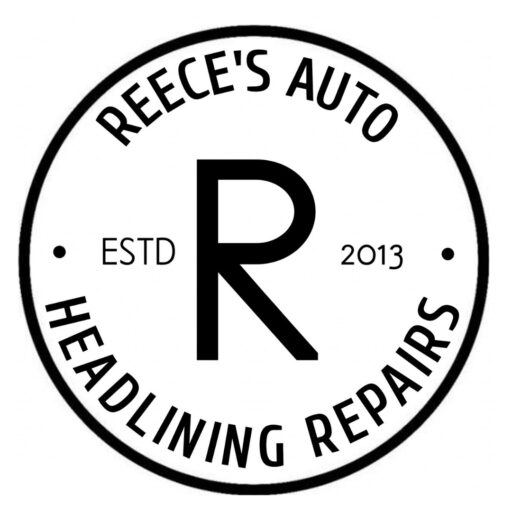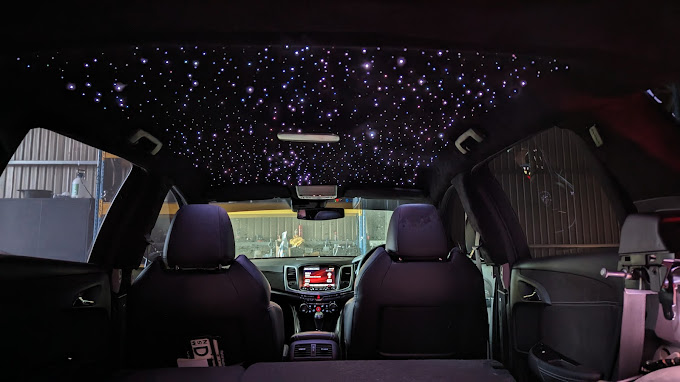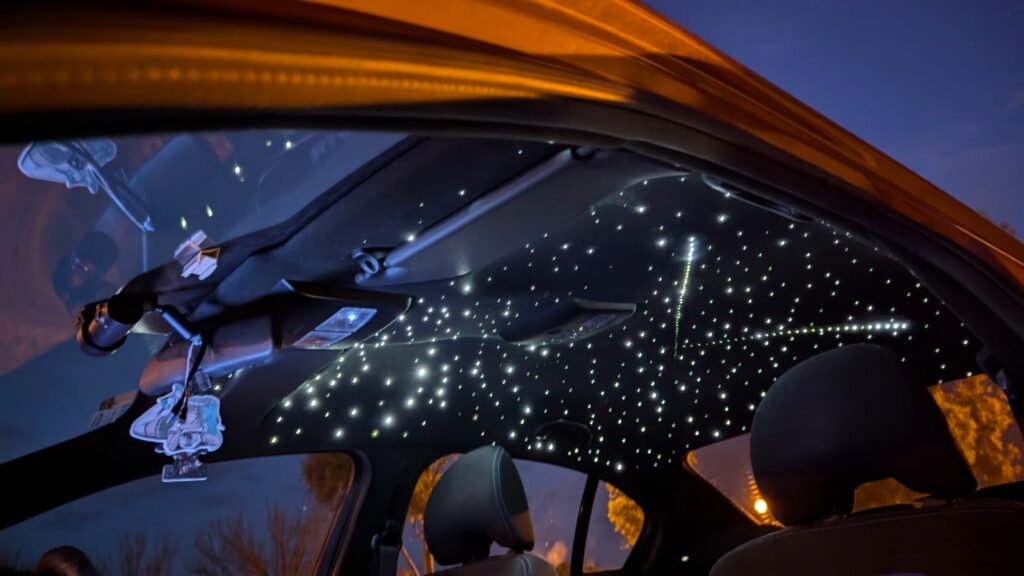This page aims to provide comprehensive information about quotes, turnaround times, processes, and fabric selections, as well as answers to frequently asked questions.
PRICE
According to a Google price guide, the typical cost for a professional starlight headliner installation ranges from $1500 to over $3500 Australian.
For detailed pricing information and a breakdown of individual costs, please scroll to the bottom of this page.
As a rough estimate for our services, which include removing the headliner board, recovering it with starlight-compatible material, installing the starlights, and reinstalling the headliner board, the approximate prices are as follows:
– Ute: around $1750 (not including shooting star kits)
– Sedan: approximately $1950 to $2200 (not including shooting star kits)
– Wagon: about $2950 (not including shooting star kits)
– European/Specialist vehicles: roughly $3200 (not including shooting star kits). This estimate typically applies to brands such as BMW, AUDI, VW, JAGUAR, LAND ROVER, PORSCHE, JEEP, and MERCEDES.
TURNAROUND TIME:
Non exchange jobs & specialist jobs (Wagons/European) are typically scheduled for 3 to 5 full days, which is ideal for most starlight installations. For instance, a drop-off at 9 AM on Monday and a pickup on Friday provides ample time for these projects. Our most frequently serviced vehicles, including Falcon and Commodore Utes and Sedans, can often be accommodated within a shorter timeframe.
Fast Exchange Option: We can reduce customer turnaround times to a rapid 4 hours minutes for starlight installations on our most common exchange jobs, specifically for Ford Falcon AU, BA, BF, FG, and Holden Commodore VX, VT, VY, VZ, VE, and VF models, available in both Ute and Sedan configurations. This expedited service is contingent upon selecting from our pre-prepared stock, which is maintained during downtimes or cancellations. These prepared components are designed to match the factory plastics, pillars, and sun visors for each specific model. We strive to keep a selection of ready-to-exchange boards on hand, but prior booking is essential before arrival.
Ford FG Ute/Sedans: Available in our #6v light oyster velour finish with approximately 400-550 fiber optics installed, or #10 black suede as an alternative.
Ford AU BA BF Utes/Sedans: Offered in our #3 light grey velour finish with around 400-550 fiber optics installed, or #10 black suede as an option.
Holden VX VT VY VZ VE VF Utes/Sedans: Prepared in either our #3 light grey velour or #10 black suede finish, featuring approximately 400-550 fiber optics installed.
ABOUT THE RECOVERY STAGE:
If the headliner is drooping, it is essential to recover it. If it is not drooping and you prefer to add the kit to the existing factory material, we will conduct a quality assessment of the current factory fabric and foam to determine if it is advisable to proceed.
In most cases, vehicles will require a newly recovered headliner, with the exception of felt or carpet headliners found in certain Mazda, Subaru, and Toyota models. Felt materials can conceal imperfections and typically do not exhibit the stitch pull effect.
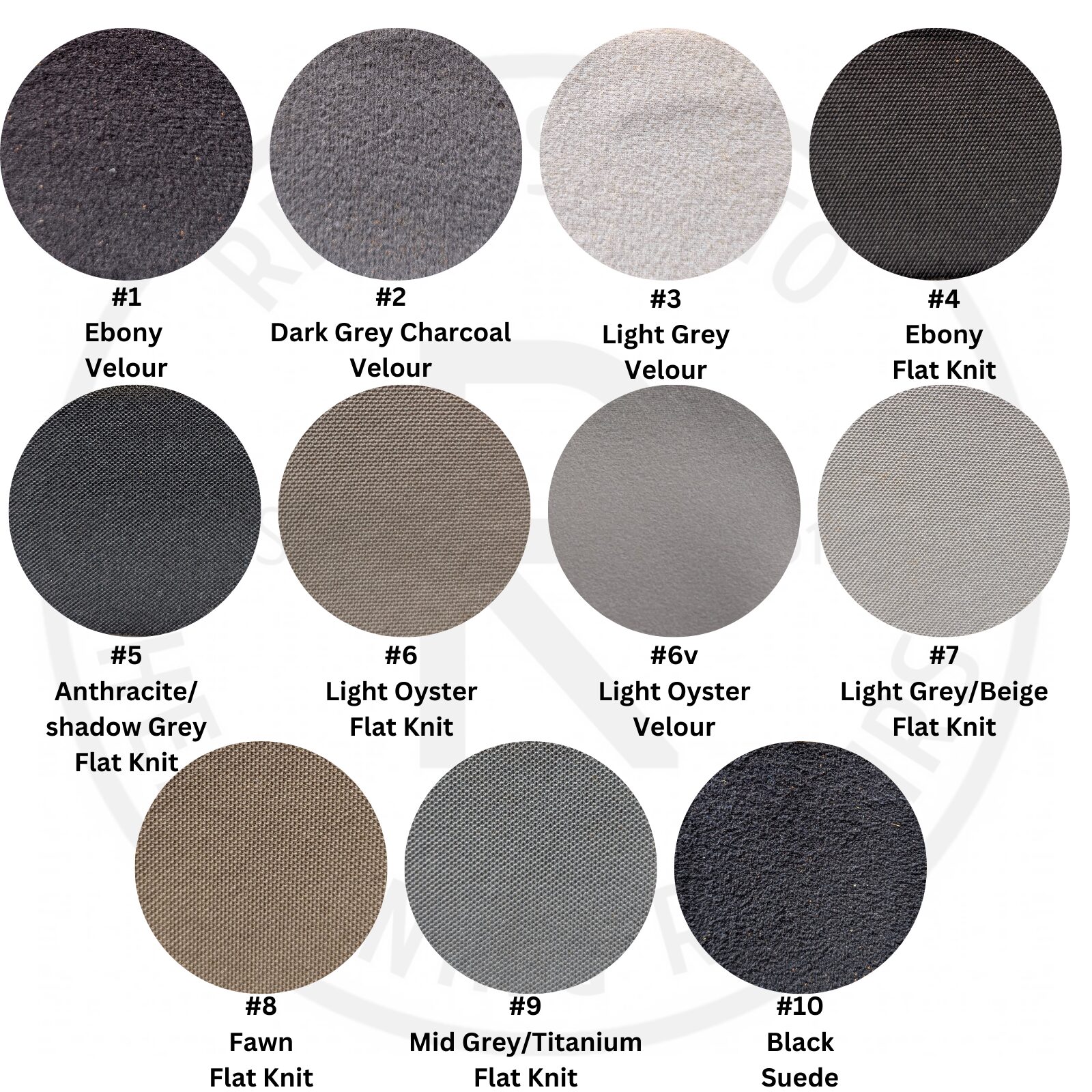
We recommend using velour or suede for fiber optic installations.
Flat knit fabric is not suitable for starlight applications; however, factory felt headliners, which resemble knit, can be used for direct fiber optic application. We can verify this in person.
Please note that the photos below are taken under bright lighting, which highlights imperfections more than they would appear once the roof board is installed in the vehicle, where shadows and a darker interior can conceal some flaws. During daylight, when the lights are off, imperfections on starlight boards become more apparent.
The following example illustrates the imperfections that can occur when fiber optics are applied to factory flat knit fabrics: visible stitch pull marks.
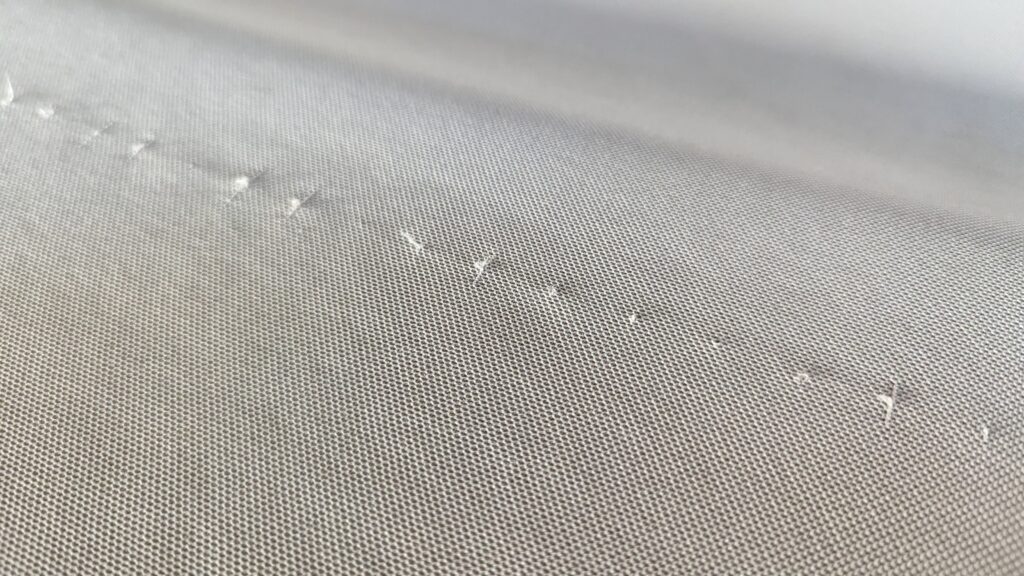
An example of significantly reduced imperfections when using fiber optics on suede fabrics is presented below: While the holes remain visible in daylight or under lighting, the unsightly stitch pull marks are considerably less noticeable. This is the reason we advocate for the use of suede or velour. Velour fabric is even more effective at concealing imperfections. Our available velour options include #1 Ebony Black, #2 Dark Grey Charcoal, and #3 Light Grey. Additionally, we now offer #6 Light Oyster in velour, designated as #6v.
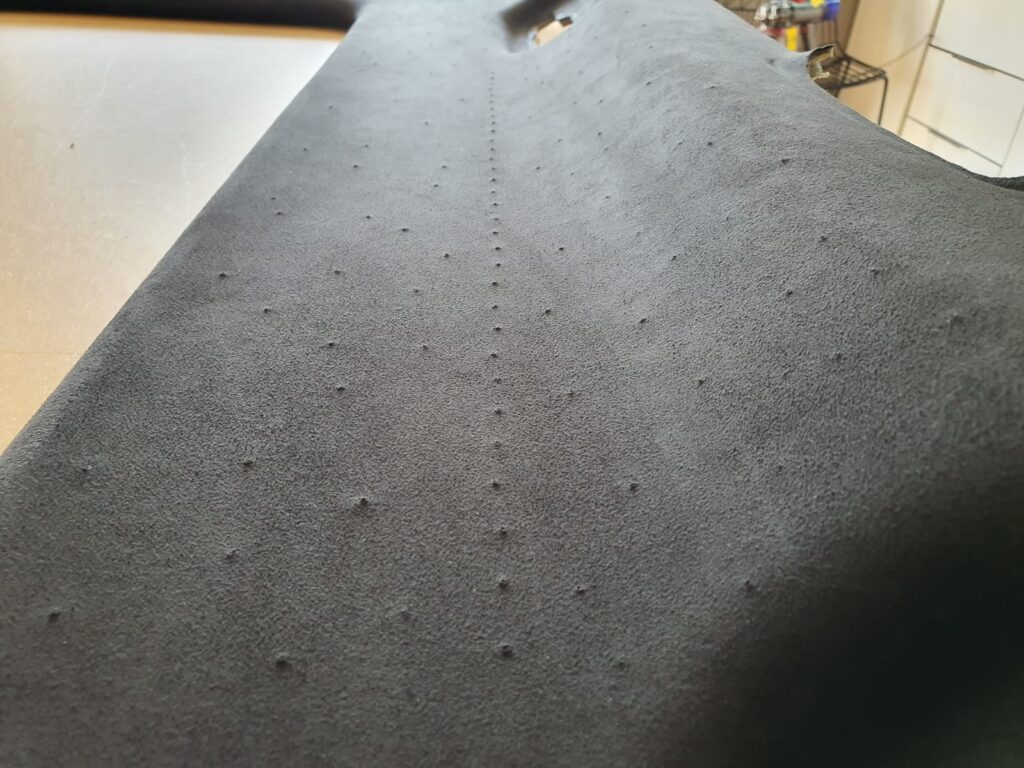
If your headliner is made of felt, you may choose to forgo recovery in suede or velour, which can reduce the overall cost. However, factory flat knit stitch headliners tend to show imperfections when the fiber optic is inserted, so we recommend recovering them with either foam-backed suede fabrics or velours.
Additionally, we now offer the #6 light oyster in velour, referred to as #6v. This product is particularly suitable for the Ford Falcon FG when installing a Starlight system while maintaining the original cream, beige, or tan appearance. Please see the photos below for an example of our #6V velour.
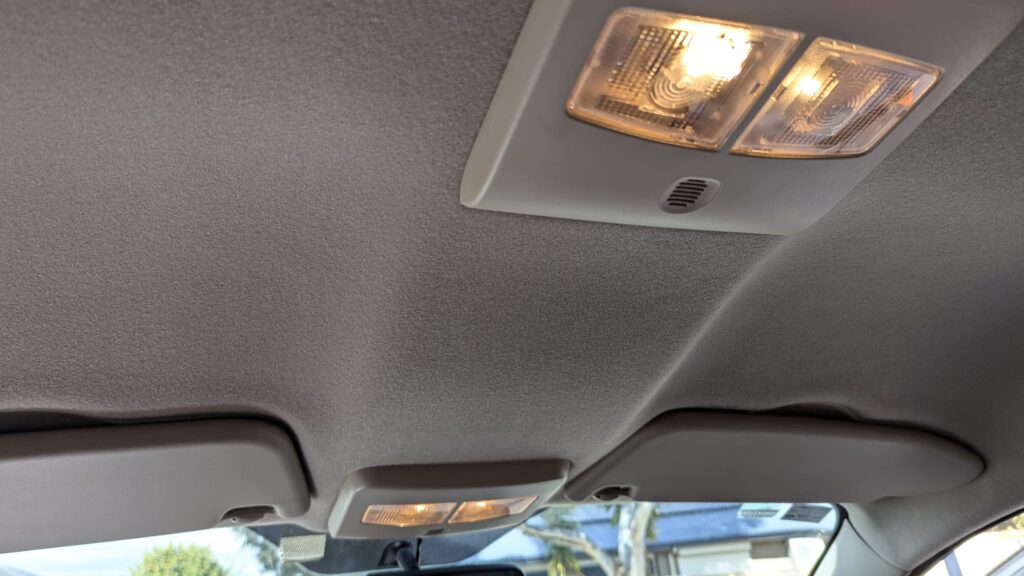
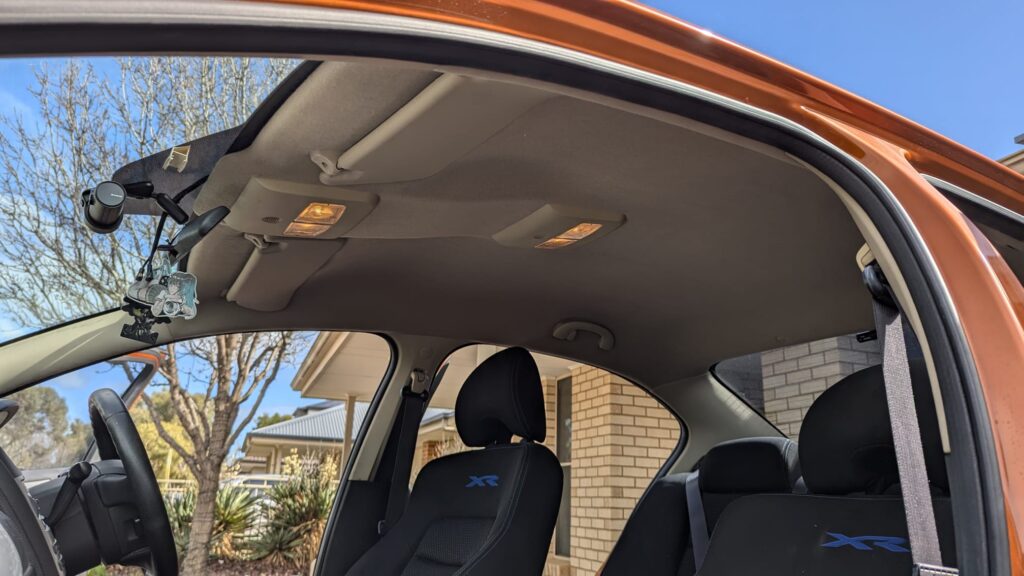
Any roof lining can exhibit variations in colour based on the lighting conditions at the moment. The images below illustrate how the same fabric appears more cream or tan in one photograph, while it takes on a lighter grey or beige hue in another. Both images feature the same car, the same fabric, and were taken on the same day, but from different angles of light.
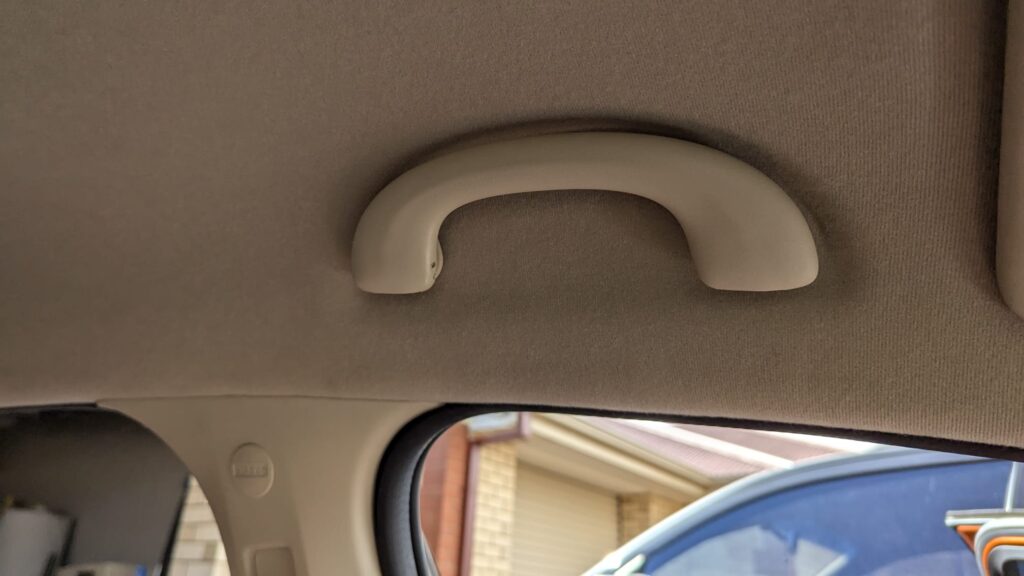
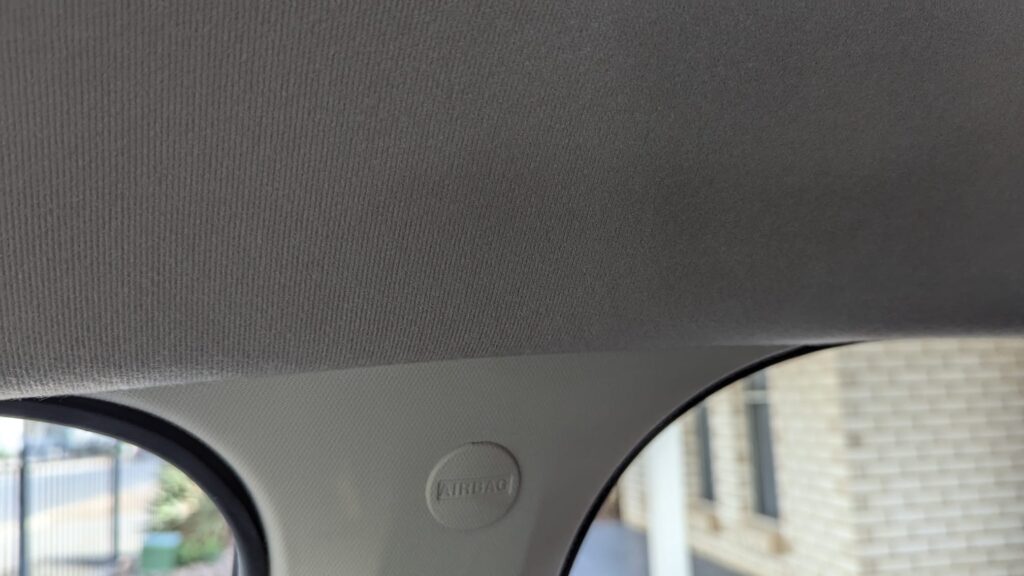
An example of utilising factory felt fabric can be observed in the Ford Raptor project we completed. While factory felt headliners may present a flat knit appearance, they typically do not exhibit stitch pulls, making them suitable for fiber optics applications. However, it is important to note that felt headliners are prone to creasing when removed from the vehicle and subsequently reinstalled. We will discuss the available options, including the possibility of applying a starlight kit while the board is lowered but still within the vehicle.
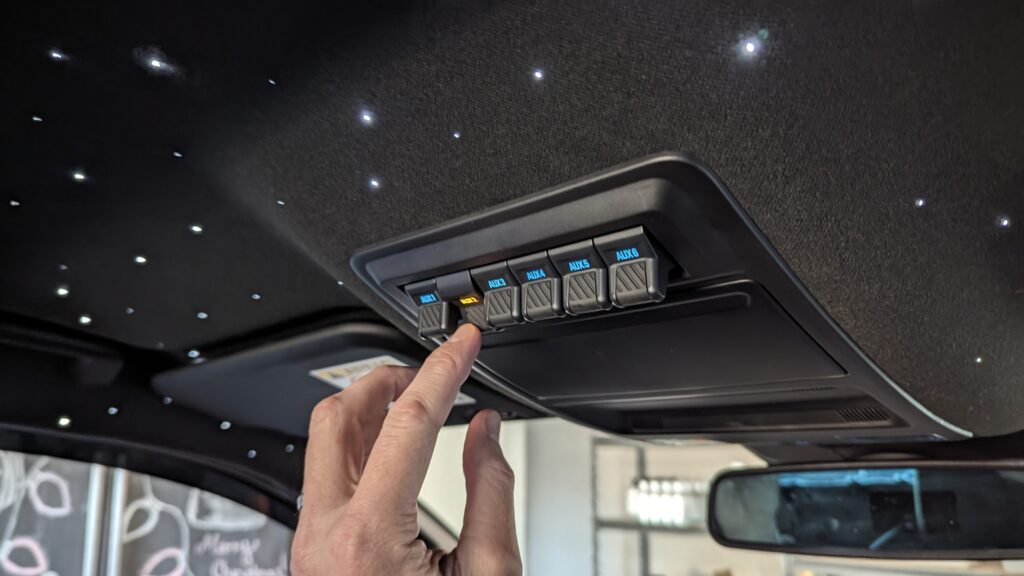
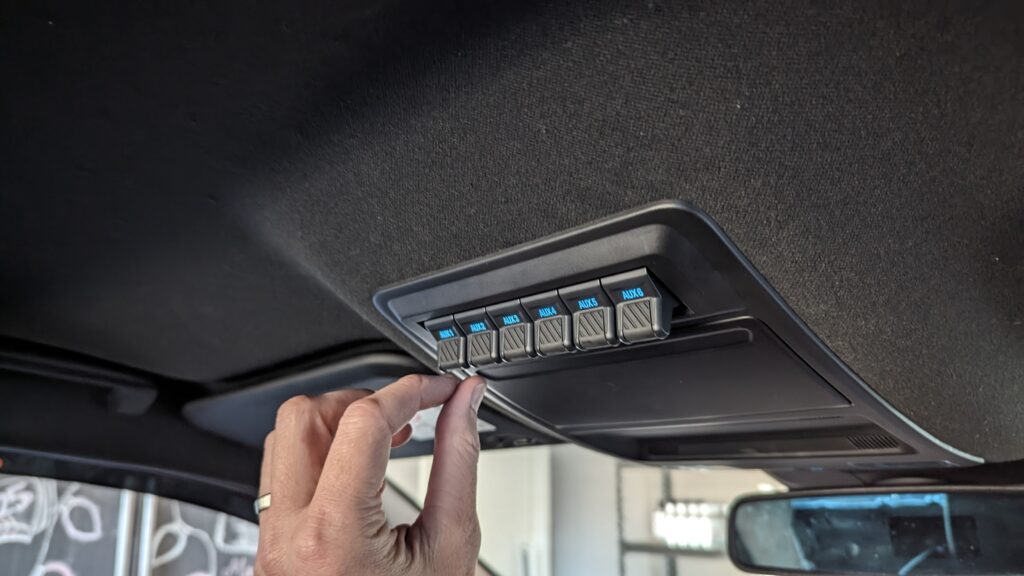
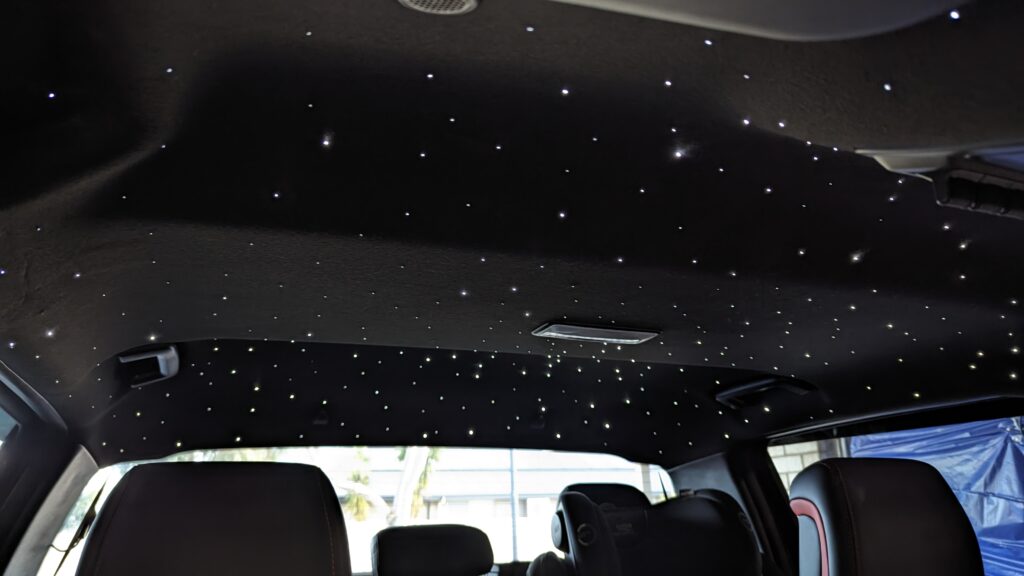
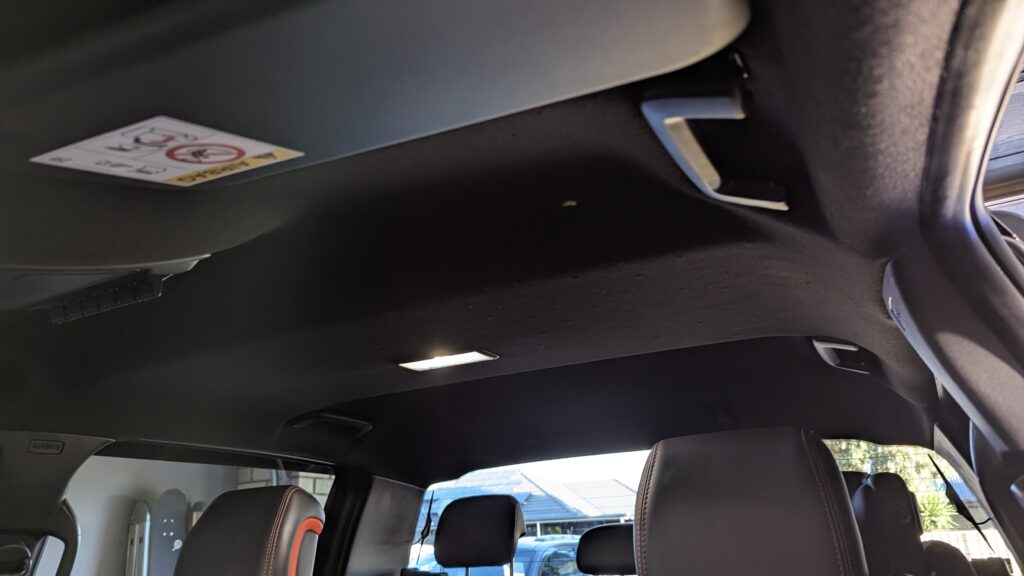
We recommend utilising Velour for recovery if our premium Suede is unavailable. Additionally, we will soon have light oyster suede and light grey suede added to our existing black suede inventory. Customers also have the option to provide their own suede fabric; however, please note that the quality of the supplied material may affect durability, though it should still perform adequately.
Q&A: WHAT IF WE SKIP THE RECOVERY STAGE?
If you choose to leave your headliner as is, without recovering it, there is a potential issue with factory flat knit fabrics. When the fiber optic light cable is inserted, it may cause imperfections or stitch pulls in the fabric. For this reason, it is generally recommended to recover the headliner using Velour or Suede materials, which can help minimize the visibility of such imperfections. However, it is important to note that some imperfections may still occur, albeit to a lesser extent. Ultimately, the decision rests with the customer. If we exclude the recovery process from the quote, we will still need to account for the removal and reinstallation stages, unless you choose to bring the board to us already removed and handle the reinstallation yourself. If you prefer this option, please reach out to us for a detailed estimate.
EXTRA NOTES ABOUT THE OUTCOME/HANDOVER
The starlight engine device emits a subtle hum when operating in twinkle mode, which can be more pronounced if the device is installed overhead behind the headliner. Typically, this sound is only noticeable when the vehicle is turned off and twinkle mode is active. If the noise is bothersome while the car is stationary and off, we recommend simply disabling the twinkle mode using the phone app or controller, as this twinkle function generates the movement within the starlight LED engine that causes the slight hum or vibration.
The cut fiber optics that protrude through the fabric may feel somewhat sharp when touched. However, using our recommended suede or velour fabrics generally provides a softer touch. If the fiber optic strands emerge directly from felt fabric, they may feel sharper, so we advise opting for suede or velour if this is a concern. Additionally, we prefer not to position fiber optics near sun visors or grab handles, as these areas are frequently touched, minimising the risk of accidental contact with the fiber optics.
Disclaimer: Installation of Starlight Fiber Optic Headliner
By opting to install a Starlight Fiber Optic Headliner, you recognise and accept that the lighting effects, while enhancing the visual appeal, may lead to distractions when activated during driving. This lighting system is intended solely for aesthetic enhancement and should not be utilised while the vehicle is in motion if set up in a way thats distracting to the driver.
It is advisable to operate the system only when the vehicle is parked or when it is safe to do so without causing distraction. The installer, manufacturer, and seller disclaim any liability for accidents, damages, or injuries that may arise from distracted driving associated with the use of the starlight headliner.
By continuing with the installation, you assume full responsibility for the safe operation of the system and acknowledge that using the headliner while driving may divert your attention from the road, thereby increasing the likelihood of accidents.
Please ensure responsible use in compliance with all applicable local laws and regulations.
WE DON’T ADD IN FIBRE OPTICS TO THE SUNROOF SHADE PANELS
Please be advised that we do not currently offer fiber optic installations for sunroofs; our services are limited to the headliner board that surrounds any sunroof.
Certain sunroof styles may not be compatible with our services, so we recommend checking with us for confirmation. If your vehicle features a sunroof that we have not previously worked on, we will need to assess it in person to determine if it falls within our scope of work. The feasibility of the job largely depends on how the headliner detaches from the sunroof area. Typically, we leave sunroofs in place while removing headliners and can even recover sunroofs within the vehicle, provided the headliner is simply clipped around the sunroof. However, we do not work on sunroofs where the headliner is secured with small screws around the sunroof cutout, which are often visible when the sunroof is open. In such cases, removing the sunroof shade panel would be necessary to extract the headliner, a service we unfortunately do not provide for most makes and models. Additionally, we generally avoid aftermarket sunroof installations.
FULL BLACK OUT OPTION:
We can certainly provide a black headliner board without any issues. However, please note that we do not recover or spray paint sun visors or plastic components. Customers have the option to either perform this work themselves or supply us with black components for installation. Regarding pillar recovery, we can typically recover them in black fabric for most vehicles. Please send us photos of your current pillars so we can verify if they are suitable for recovery and provide a price estimate. Some pillars may require sewing equipment for recovery, which we do not offer, so we will need images of all pillars beforehand to assess their recoverability.
For painting plastics black, we recommend two alternatives, as this is no longer a service we provide:
1) You can bring the vehicle to us, and we will remove the headliner, pillars, and roof components. Once removed, we will notify you so you can pick up the components to spray them black and return them to us afterward.
2) Alternatively, you can drop off the already removed headliner and/or pillars for us to handle the recovery process only, while you take care of the removal and reinstallation. This option also reduces the overall cost.
For pillar recovery, we recommend using #5 Anthracite black charcoal flat knit fabric, which matches the FGX and Holden’s Black Shadow Grey. This allows us to utilise clean, non-foam backed fabric from other headliner boards, ensuring a tight factory finish. #10 black suede on pillars is ok too, but will have a foam backing. Typically, we schedule an additional six hours for the turnaround time for pillar recovery, and the vehicle needs to be brought to us. If you choose to use our new fabric stock, it will be the same price but will have a 4mm foam backing that cannot be removed, resulting in a sponge-like effect on the pillars, which may not be ideal. I recommend the tighter finish with the reused Anthracite fabric, as we only use clean offcuts. Alternatively, recovering in suede would create a cohesive suede appearance if the headliner is already black suede too, and velour can also provide an attractive look on the pillars.
SUMMARY OF HOW IS IT DONE
You can find a video showcasing the shooting stars along with an explanation of the process on our YouTube Channel at the following link: https://youtu.be/bzetu0ZBQQg
EXAMPLE OF FINISHED INSTALL
Q&A’S: WHAT IF THE ORIGINAL BOARD IS NOT SAGGING?
If the Headliner board is in satisfactory condition and recovery is unlikely to be necessary, you may be able to forgo the recovery stage. However, I recommend opting for a recovery in Suede, as it effectively conceals most imperfections caused by the Fiber Optic protruding. In contrast, the original flat knit fabrics tend to reveal these flaws, and there are instances where the stitching may become strained due to the fibre optic elements. If the headliner is not prone to sagging, or if it is a model designed to maintain its shape, recovery with new suede material can be applied directly over the existing factory fabric. This approach is often utilised for roof boards that have factory materials that are either permanently adhered or too new to remove, commonly seen on late model Toyotas and Subarus. Typically, felt or carpet liners are permanently glued in place.
Q&A’S: JUST SEEKING THE SUPPLY OF KITS OR BOARD ONLY
If you are interested in the kits we utilise, we typically purchase them at a price range of approximately $150 to $600. However, our current inventory is limited and allocated for upcoming orders. Therefore, we recommend that customers consider sourcing their own kits directly from suppliers.
We generally make our purchases through eBay. Below is a link to starlight kits available on eBay. Please note that suppliers and stock can change frequently, making it challenging to direct you to a specific product. We suggest searching for “twinkle,” as this term yields options that create a starry effect. Kits that include a meteor shooting star unit are also highly recommended. For sedans, we advise at least 400 stars, while for wagons, around 800 stars is preferable. Additionally, pay attention to the lengths of the fiber optics; we prefer to buy 3-meter lengths to provide more flexibility in concealing the unit after installation.
IF YOU WISH TO DIY, FIND A STARLIGHT HEADLINER KIT HERE BELOW ON EBAY:
https://ebay.us/uM5XCA.
Q&A’S: IS THIS SERVICE ONLY OFFERED DURING OFF PEAK WINTER?
Starlight Headliner installations are typically offered only during our off-peak winter months, specifically in May, June, July, August, September, October, and November. This limitation arises from our high volume of standard job orders during the summer season, which keeps us exceptionally busy. The installation of starlight headliners is a time-intensive process, and during that period, we could potentially schedule an additional 20 standard jobs within the same week. Consequently, the opportunity cost of performing starlight installations during the summer peak is too significant. However, if a non-refundable deposit is made to secure a booking during our peak season, we can accommodate such requests.
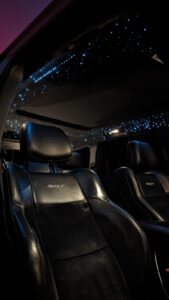
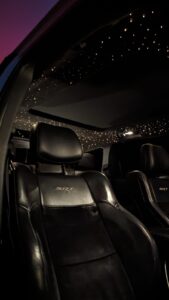
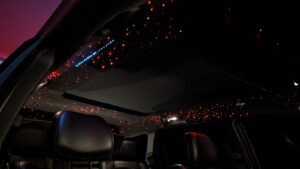
PRICING FOR CUSTOM STAR LIGHT FIBER OPTIC INSTALL:
If the details on this page are unclear or if you have further inquiries, we can schedule a phone call to discuss the specifics in more depth. Located in Adelaide, SA. (If the numbers become overwhelming or if you have additional questions, we can discuss them in detail.)
Please note: We provide an approximate number of star light fiber optics, as the available kits vary in size.
RECOMMENDATIONS FOR SEDANS / UTES (INCLUDING WAGONS WITH SIGNIFICANT MOONROOF CUTOUTS) ARE:
For sedans and utes, you might consider using 370-500 stars, or even a 550, depending on the kit options available. However, opting for a larger quantity of 800-900 stars on a sedan can enhance the overall aesthetic and effectively fill the roof area with stars.
RECOMMENDATIONS FOR WAGONS ARE:
For wagons, we suggest using approximately 800-900 stars. Please note that if the wagon features a large sunroof cutout that occupies space, you may choose to use fewer stars, as there will be less area to cover.
COST BREAKDOWN
A: INSTALLATION COST FOR STARS
$1,250 for the installation of 370-450 stars
$1,500 for the installation of 550 stars
$2,050 for the installation of 800-900 stars.
B: COST TO REMOVE AND REINSTALL BOARD
$50 for Standard Commodore/Falcon UTE
$200 for Standard Commodore/Falcon Sedan
$200 for Standard Commodore/Falcon Wagon
$250-$600 for Specialist/European Cars (Pricing varies based on the specific job; please send us photos for confirmation).
C: RECOVERING BOARD WITH NEW MATERIAL IF NECESSARY (e.g., Velour or Suede, pricing may vary)
$300 for Standard Commodore/Falcon UTE
$350 for Standard Commodore/Falcon Sedan
$400 for Standard Commodore/Falcon Wagon
$350 for recovering a single sunroof shade panel (please note: not all sunroofs are compatible)
$400-$800 for Specialist/European Cars (Pricing varies based on the specific job; please send us photos for confirmation).
D: SUPPLY OF STARLIGHT FIBER OPTIC ENGINE & WIRING/FUSES
$150 for approximately 370-450 star kit
$200 for approximately 550 star kit
$300 for approximately 800-900 star kit
E: SUPPLY AND INSTALLATION OF SHOOTING STAR KIT $300 (Note: most shooting star kits can be divided to create 1-2 shooting stars effectively, depending on the available kit. In some cases, a 3rd shooting star or more may be possible from the same unit.)
$150 for the installation of 1-2 shooting stars (+$100 for each additional shooting star).
+ $150 for the supply of the kit.
TOTAL:
To calculate the total cost, we sum sections A, B, C, and D, excluding any sections that are not required, such as the recovery stage if it is unnecessary. To summarise, above is the detail of where we obtain your quote from, and the sum total is what we send you for your specific car, make and model.
